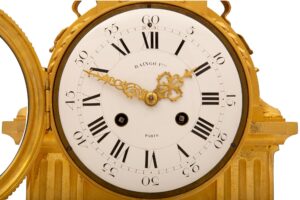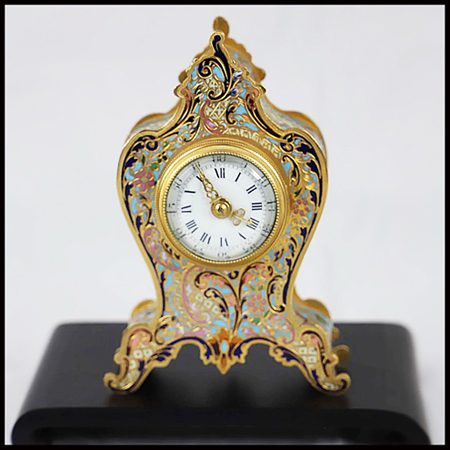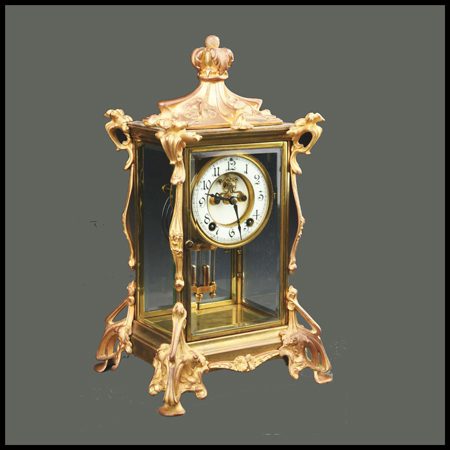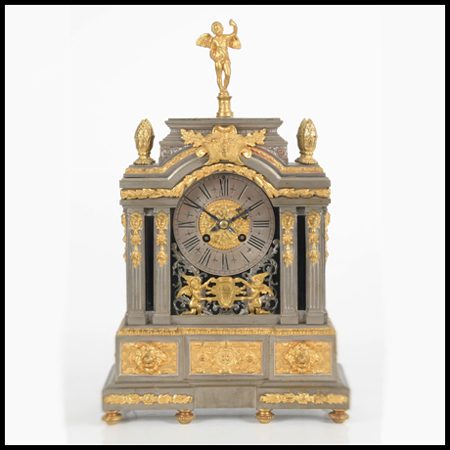Expert Guide for your Antique Clock Care
Expert Guide for your Antique Clock Care
An antique clock has its own unique little personality and you will slowly learn how often it likes to be wound and how picky it is about where it is placed. First of all setting up your antique clock and it’s care, starts with where you decide to place it. The mantlepiece is a good place to start for your vintage small clock . Don’t have one, a shelf will do for your vintage small clock. Let’s go through our expert advice on rare clocks and antique clock care.
Cardinal Rules for Antique Clock Care

- It’s ok to move the hour hand (gently and if it is hard to move stop) to set time or correct bell ring but NEVER move the minute hand other than clockwise for vintage shelf clocks or any vintage style clock. Moving it counter-clockwise your antique mantelpiece clock will damage your the mechanism of your antique clock for home. This also holds true for any vintage stye clock, providing it is a mechanical vintage clock.
Another method of setting the correct bell chime is to move the minute hand to the 11 and then back to the 9 until the clock strikes properly. Generally, for the best care of vintage clocks, be sure to set the time by only using the minute hand, stopping slowly just before the hour and half hour, giving the bell a chance to set up. - Do not move any antique table top clock, or other type, with the pendulum attached and swinging freely. The best care for antique clock is to remove it first. Otherwise you will damage your timepiece.
- Never put a marble clock on its side as they are cemented together and built to stand erect. This is not good vintage clock care, as it may cause breaks in the marble. 🙂
- Wind antique mantel clocks every five to six days (so it does not become sluggish in 7th or 8th day) and wind both of the holes on it until they are tight. Despite the common saying, you CANNOT overwind your 19th Century antique mantel clock.
- Good antique shelf clock care requires that adjustments should never require great amounts of force. If so, it is probably due sooner than later for a cleaning and oiling.
- Don’t be intimidated, as pendulums were typically designed to be set up and maintained by their owners without the benefit of an expert to insure the best antique old clock care. Remember, if you care for your antique shelf clock, it will outlive YOU!
antique clock care and set up
 Your most important tool in your antique clock care kit will be a small, inexpensive pocket level for accurate antique mantel clock care. With this you will need to make sure that wherever you position yours, that the surface is very level, especially from left to right.
Your most important tool in your antique clock care kit will be a small, inexpensive pocket level for accurate antique mantel clock care. With this you will need to make sure that wherever you position yours, that the surface is very level, especially from left to right.
If it is a multi-level tall clock, then put the level on top layer as well. The swing of the pendulum which hangs down and swings from right to left will be affected if it is not level and it will prevent your antique and vintage clock from running well, if at all.
The front to back level of your fireplace clock vintage or otherwise, should also be reasonably level because you do not want the pendulum resting on the bell or back wall or it will not run, but it is not necessary to be an exact level. Next is placing the pendulum on the rod.
This can be done with care with your antique clock by opening the swinging metal door on the back (assuming you have a door and not just an opening), or you can remove the back panel on many.
The pendulum rod (located in the back of the movement) is where you will place it on the hook at the bottom of the rod, or if silk suspension on the thread hook, being careful not to move the rod upwards while doing so.
Moving the rod in your antique clock upwards may displace it. Once done you can either gently lift the clock just a bit on its end and gently down again, or move the pendulum to start it swinging. You will then be listening for an even tick tock. A tick tock from your French clock or American clock that is uneven means that your mantel clock is not level and will stop sooner than later. By remembering these steps, you will insure that you have the best antique clock care, without hiring an expert.
RARE CLOCKS Time Adjustments (Beat)
 A mantel clock out of beat is a cause of poor time keeping. An even beat or tick is the sign of a well running old clock. A limping or uneven tick is the sign of sick mantel clocks. For the best antique clock care, the tick tock should be even in a well running one.
A mantel clock out of beat is a cause of poor time keeping. An even beat or tick is the sign of a well running old clock. A limping or uneven tick is the sign of sick mantel clocks. For the best antique clock care, the tick tock should be even in a well running one.
Should the tick tock not be even and yours is not continuing to run, you will need to do the following: If you are a beginner and if your vintage clock is not level, you can adjust the side up that your level indicates with coins, shims, washers, etc. so as to raise it to become even from side to side of your shelf clock.
For the experienced owner, if the surface is even, you can slightly and gently bend the crutch (the wire that the pendulum slots into) in the direction of the shim or the end you raised in order for the clock to beat evenly.
This will allow you to put your mantel clock “in beat” without having any potentially unsightly additions on your mantelpiece.
For silk string old clock mechanisms you can slightly bend the pendulum rod. French clocks are more precise and less forgiving than American vintage clocks and will require a bit more effort to set them up.
If you cannot wind your vintage clock before leaving town, gently stop the pendulum because if the strike runs down first it may jam the timekeeping of your precious mantel clock (or running) train, and it will not start evenly when rewound.
When you need to match the bell ring to the hour of your old clock, bring the minute hand (longest hand) to the hour and count the number of strikes from your old antique clock. If the hour hand does not match the chime or gong of your old antique clock, move the hour hand (shortest hand) to the number struck ( forward or backward, but never the minute hand backwards or counter clockwise). (If it reads 12:00 and strikes 8:00, move the hour hand (shortest) forward to 8:00. (See also above). In some rare instances, and I have seen this with carriage clocks, where someone may have put the hands on incorrectly, the only way to adjust the hour is to re seat the hands correctly for your old clock.
MANTEL CLOCKS AND FURTHER Chime Adjustments
After the shipping of your mantel clock, the chime hammer may need to be adjusted in order to appropriately strike the bell of your vintage clock. The slight and gentle bending back and forth as well as up and down of the strike hammer rod allows you to adjust how the hammer falls on the bell of your old clock.
In order to achieve the tone and resonation you desire, firmly hold the hammer rod at the middle with a needle nose pliers and use your free hand to raise or lower the hammer head end of the rod, allowing a minor space between the hammer and the bell. This will allow the chiming of your mantelpiece clock, to chime according to the exact hour.
Cleaning & shipping YOUR SHELF CLOCK
 A weekly regular feather dusting of your old clock, will help reduce dust build up, but twice per year use a vacuum cleaner nozzle with a soft brush attachment to fully remove all dust from crevices and cracks on your shelf clock.
A weekly regular feather dusting of your old clock, will help reduce dust build up, but twice per year use a vacuum cleaner nozzle with a soft brush attachment to fully remove all dust from crevices and cracks on your shelf clock.
Please avoid moving your vintage clock around when dusting the surrounding area. Dial glass can be cleaned by applying a very small amount of Windex directly to a clean cloth and the glass carefully rubbed and then wiped dry with a clean paper towel or soft cloth.
Here is a good link for information: National Association of Watch and Clock Collectors, Inc.
SHIPPING OF YOUR ANTIQUE CLOCK
You may not encounter this on other websites that offer vintage clocks for sale, but you should. When selling antique clocks, many sellers will utilize carriers such as FedEx, DHL, UPS, or the USPS to not only ship your antique mantel clock to you but also pack it.
The amount of breakage in shipping for old clocks has risen exponentially in recent years, so it is best to fully understand what is necessary to inform the shipper so that your old clock does not arise in pieces. Do not be afraid to provide whoever you go to for antique clocks for sale with a list of do’s and don’ts in the packing and shipping of your vintage old clock, as even though you will and must purchase insurance, your treasure will be lost. Your investment will be tied up for weeks until settlement of any claim.
YOUR LIST:
1-Under any circumstances, never use peanuts, as they cause jiggle and jiggling in the carton, which will cause breakage of your antique clock.
2-If your antique mantel clock is a statue on a marble base, know that marble can easily crack. Lay the shelf clock on its side so that if the box drops, the metal of the statue does not drive downward when it hits the ground, thus cracking the marble.
3-Criss-cross any glass, overlaying the metal with “painter’s blue tape.” Some carriers offer a light blue adhesive film, which is not as good. This will prevent movement in the glass, which can cause chipping or cracking in an old clock.
4-First, use a small bubble or soft material to wrap the vintage clock and then several layers of medium to large bubble wrap, depending on the size and weight of the old clock. I prefer all bubble wrap to be secured by the same painter’s blue tape as the glass, as you will find that the unwrapping of your vintage clock will be far easier.
5-Line the carton with a one-inch foam core at the bottom, top, and all of the sides for additional cushioning.
6-Ask for 300# test weight cartons, and if not available, your vintage clock will survive better if double-boxed as there is less chance of crushing. The carriers do not segregate delicate items from regular ones anymore, and this contributes to the increase in damage to vintage clocks.
SOME USEFULL ANTIQUE CLOCK DEALERS AND RESOURCES
Westland London Antique fireplaces & architectural antiques
Lapeda UK’s Largest Association of Art & Antiques Dealers
Instructables A community for people who like to make things.
Pabbly Powerful Applications to Scale & Grow Your Business.
Jacqueline Rare Antique About collectible valuable, expensive, and rare items in the world.
SOME USEFULL ANTIQUE CLOCK RESTORERS
If you require service for your antique timepiece, whether a mantel clock or carriage clock, and clocks in general, I highly recommend the people I use to repair my mine when I buy old clocks. I have and do use two different companies for my collectors clocks.
On the West Coast I use JOHN NICHOLS AT MONTANA CLOCK SHOP. 1617 Montana Avenue Santa Monica, CA 90403 (310) 394-0711. When it comes to repairing anything from a vintage Art Deco Clock to a masterpiece by Raingo Freres mantle clock, there is nobody better to repair your cherished very old clock.
Please also visit our other pages so you may see our current antique clocks for sale, including French clocks, American clocks, and antique carriage clocks, each with its unique charm and history.
ANTIQUE AMERICAN MANTEL CLOCKS
I hope you found our antique old clock care page of value. If you have any additional questions as to antique shelf clock care please contact us and we shall endeavor to answer any questions to the best of our ability that we can. Don’t forget to explore our other exquisite timepieces, including American mantel clocks, French clocks, Art Deco clocks, and antique small clock, from mini shelf clocks to carriage clocks, each with its unique charm and history.

